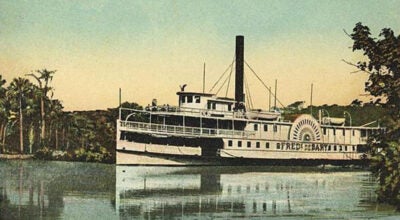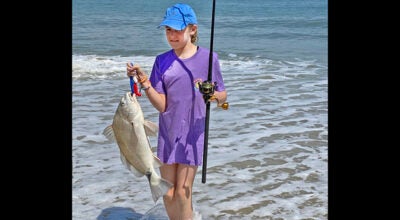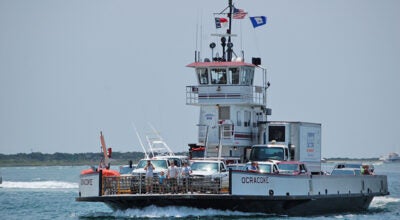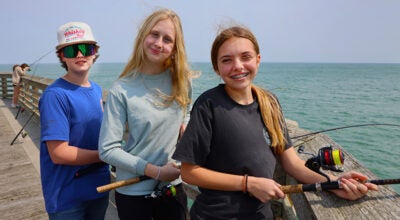WRC finds sportfish in hurricane-affected rivers
Published 5:11 am Thursday, January 10, 2019
Three months after Hurricane Florence caused substantial fish kills in many coastal rivers in North Carolina, fisheries biologists with the N.C. Wildlife Resources Commission have found sportfish such as largemouth bass, sunfish and crappie in all rivers surveyed to date, albeit in reduced numbers.
After Hurricane Florence made landfall in southeastern North Carolina on Sept. 14, fisheries biologists documented isolated fish kills in most rivers east of I-95 from South Carolina to the Virginia state line and major fish kills in the lower Cape Fear, Northeast Cape Fear and Waccamaw rivers. Fish kills were mainly due to significant declines in dissolved oxygen levels, rather than contaminants, pollution or other factors. The lower sections of these rivers were devoid of oxygen and unsuitable for aquatic life for more than 30 days.
After dissolved oxygen levels returned to normal, biologists began conducting electrofishing surveys to determine the extent and severity of the fish kills.
“Although their abundance was below normal, we found largemouth bass, crappie and redear sunfish in the Northeast Cape Fear, Lumber and Waccamaw rivers,” said Kyle Rachels, the commission’s District 4 fisheries biologist. “The continued flooding in the Cape Fear River prevents us from surveying it. However, we’re encouraged by the results in the Northeast Cape Fear and suspect the populations in the Cape Fear are similar.”
Although spawning populations for most species will be low next spring, in the absence of competition and predation, it is not unusual to see successful reproduction following fish kill events, Rachels added.
“Because it takes five to seven years or more for some species to naturally recover to pre-hurricane levels, we will supplement populations by stocking white catfish, channel catfish, redbreast sunfish and largemouth bass in many of our southeastern rivers next summer,” Rachels said.
Stocking rates and locations will be recommended based on additional surveys conducted in spring 2019 to determine adult abundance. Fish produced for stocking will be released during the early summer in most cases. Staff biologists will conduct follow-up surveys in the affected rivers during the fall of 2019 to document natural recruitment and survival of stocked fingerlings.
“On a positive note, the American shad (or white shad as they are commonly called) run in the Cape Fear River is expected to be good again this spring as adults in this migratory population were in the Atlantic Ocean during the hurricane’s passage,” Rachels said. “Anglers fishing for American shad generally fish below the three locks and dams in Bladen County during March and April.”
The striped bass population in the Cape Fear was also impacted by Hurricane Florence as many adult fish were present in fish kills especially in the Wilmington area. The commission’s Watha State Fish Hatchery stocked over 119,000 6-to 8-inch striped bass, weighing over 20,000 pounds, into the Cape Fear River this month as part of on-going management efforts for this species.
Biologists will continue to monitor population recovery in coastal North Carolina rivers for the next several years. Individuals who want to learn more about fish recovery and the commission’s stocking efforts in the Coastal Plain can contact Rachels at kyle.rachels@ncwildlife.org.
TO READ MORE IN OUR ON THE WATER SECTION, CLICK HERE.





